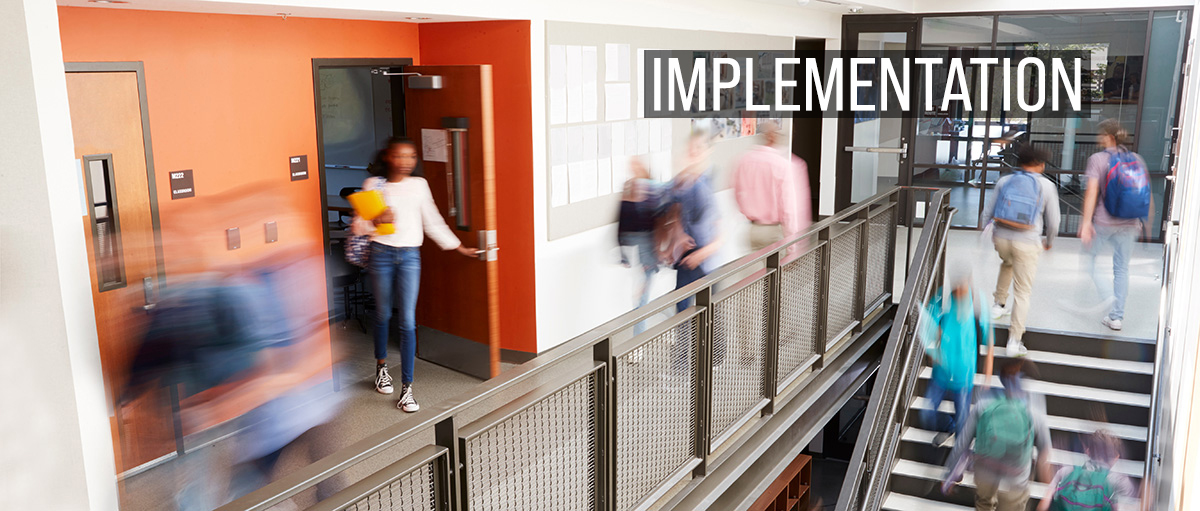
PROGRAM INTRODUCTION
getting started
The Walking Wise Implementation Guide breaks down barriers to establishing sexual exploitation education programs in school systems. It outlines the five key steps to establishing and maintaining a successful district-wide or school-wide safety education initiative.
“While other
curricula often get
bogged down in theory,
Walking Wise provides clear
and targeted education.”
Seth W. Boughton
Anti-Human Trafficking
Applied Data Analyst
The 5-step path To Implementation
- Gain program approval among leadership.
- Establish a safety team to own and operate the program.
- Educate staff members on identifying risk factors and indicators of exploitation.
- Engage parents to foster awareness & program support.
- Deliver student education to increase knowledge and develop life skills.
Implementation Guide & Toolkit
Walking Wise provides safety teams with essential tools to support the development of school policies and protocols, assess students' risk of being targeted, and recognize warning signs of exploitation by sexual predators, online groomers, and child traffickers.
RESOURCES
- Student Benefits
- Protective Factors
- Obstacles to Disclosure
- Five-Step Implementation
- Response Protocol
- Indicator Tool
- Risk Factor Tool
- Needs Assessment
- Self-Reported Assessment
School Policies & Protocols
In 2021, the U.S. Department of Education advised schools to “develop district or schoolwide policies and protocols for identifying and supporting trafficked victims.”
Staff within a school system offer different viewpoints into a student’s life that can help reveal exploitation. For instance, bus drivers may have a neighborhood or front‑door view of suspicious activity, while school secretaries may notice patterns of unusual early dismissals. Resource officers also may spot an inappropriately older boyfriend/girlfriend/partner providing daily transportation.
School nurses may take note of increased visits and vague health complaints. Attendance officers may notice chronic absenteeism, and assistant principals may recognize new or persistent disciplinary matters. Coaches may notice deteriorating performance or lack of participation. Teachers may observe distress signals and declining grades, while parents may see their child’s sudden withdrawal from family life. Any one of these indicators may be inconspicuous, but together, they raise a red flag that sexual abuse or exploitation may be occurring.
Anonymous Assessments
An anonymous Needs Assessment Youth Survey is an optional schoolwide screening tool designed to identify the need for exploitation education based on various risk factors within the student population. It helps uncover hidden risks that may otherwise go unnoticed, providing a clearer understanding of the challenges within the school community.
Administering an anonymous Self-Reported Youth Survey at the start of a program helps educators tailor content to students' knowledge, attitudes, and behaviors. When used as a post-survey, this tool can provide valuable insight into the program’s effectiveness.
Report Suspicions of Human Trafficking to:
National Human Trafficking Hotline
Send a Text to 233733 (BEFREE); 1-888-373-7888
Rescue America
833-599-FREE (3733)